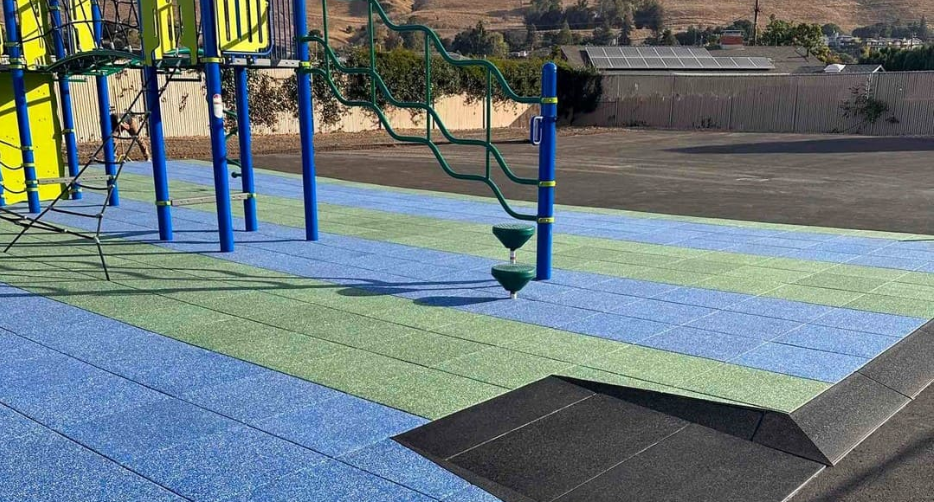Rubber has become one of the most popular materials for playground flooring because of its numerous safety advantages. Rubber surfacing in playgrounds is a reliable choice as it offers a combination of safety, durability, and aesthetics that ensures the safety of children while they play. In this article, we will explain why, by choosing rubber surfacing, we are providing children with a safer and more fun play environment.
Shock absorption
Rubber is a highly absorbent material, significantly reducing the impact of falls by providing a soft, resilient surface that significantly reduces the risk of injury. When a child falls on a rubber surface, the energy of the impact is distributed through the material’s cellular structure. Instead of bouncing or transmitting the force directly to the child’s body, the rubber gradually dissipates it. By distributing the energy, the rubber significantly reduces the force exerted on the child’s body upon impact. This minimizes the risk of serious injuries, such as fractures or concussions. This is especially important for young children, who are more prone to fall injuries.
Injury prevention
By absorbing the energy of an impact, rubber helps prevent fractures, contusions, and other serious injuries, especially to the head and extremities. The soft, cushioned feel not only provides greater comfort for children during play but also adds an element of fun to their playtime. The texture of the rubber also provides good traction, reducing the risk of slips and falls. In addition, the uniform rubber surface facilitates access for children with reduced mobility.
Hygiene and Weather Resistance
Rubber is resistant to adverse weather conditions, such as rain, sun, and frost, ensuring excellent durability and long-term safety as rubber can withstand extremely high and low temperatures without deforming or cracking. Unlike other materials, rubber does not need to be waxed, polished, or sealed regularly. Additionally, rubber surfacing requires little maintenance and is easy to clean. Rubber resists many common stains, such as food, beverages, and grease. Dirt, stains, and debris are removed effortlessly, reducing maintenance time and cost. As a bonus, rubber’s non-porous surface makes mold, mildew, fungus, and bacteria challenging to grow, contributing to a more hygienic environment.

Will not splinter or crack
Unlike wood flooring, poured rubber does not splinter. Parents and children do not have to worry about fragments that can cause injury to skin, eyes, or clothing. In addition, asphalt flooring tends to crumble over time and does not provide cushioning in the event of falls.
Chemical safety
The rubber used to make these surfaces comes from natural sources and contains no metals, wood, or harsh chemicals that can irritate sensitive skin or cause allergies. Furthermore, there is no risk of finding potentially harmful objects buried in the material. In addition, many rubber floors are made from recycled materials, contributing to environmental protection and reducing the carbon footprint of playground construction.
What did you think of this topic? Do you want to know more about rubber surfacing?
If you want a rubber surfacing for your project, playground, community, daycare, school, or public park, contact us by visiting the following link.